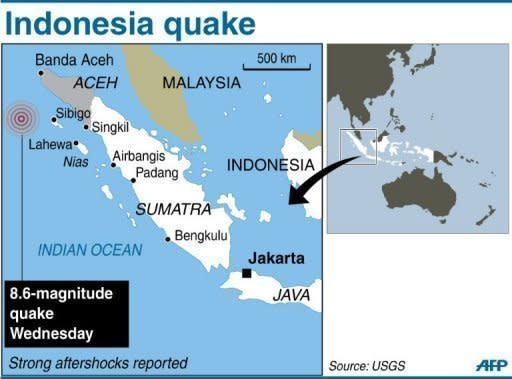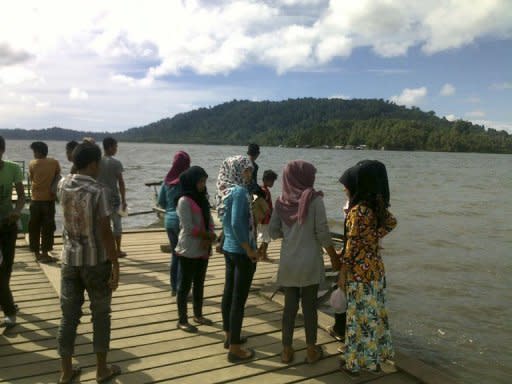Asian tsunami warnings test post-2004 systems
Giant quakes off Indonesia in which five people died caused panic but little damage, with warning systems introduced after the catastrophic 2004 Asian tsunami proving successful, experts said Thursday. In the tense hours that an Indian Ocean-wide tsunami watch remained in effect Wednesday, Indonesian meteorologists were monitoring offshore buoys that measured the waves, confidently predicting that the likelihood of a large tsunami was minimal. The use of smartphones and social media has risen to the fore across Asia since 2004, which helped to spread the word on Wednesday across other affected nations such as Thailand and India. "The early warning system is working well," Indonesian President Susilo Bambang reassured the nation in a televised address on Wednesday. "So far, there is no tsunami threat." At a magnitude of 8.6, the first of the two quakes which hit Wednesday was the 10th strongest recorded in the past hundred years -- all the others produced deadly tsunamis. Indonesian authorities said five people died as the quakes struck, two from heart attacks and three of shock. At least another seven were injured, including a child in critical condition after falling from a tree. Indonesia launched a $130-million tsunami warning system in November 2008 in a bid to prevent a repeat of tragedies like the 2004 disaster, which killed around 170,000 people in the archipelago nation alone. On Thursday, life in Indonesia's Aceh province, which was nearly flattened in 2004, was returning to normal, with traffic in the streets and no visible signs of damage in the capital. Shops in Banda Aceh were open, most people were back at work and farmers were in their fields. Electricity was also back on, though schools were empty as parents appeared too fearful to send children to classes. Officials said Aceh was spared this time because the epicentre of Wednesday's quake was much farther offshore than the 2004 quake. Suharjono, head of the earthquakes department at Indonesia's Meteorology and Geophysics Agency (BMKG), said authorities had known a tsunami could hit 50 minutes after Wednesday's quake. "We also knew which parts of the coast to watch," he said, explaining that offshore buoys send signals to monitoring stations in Indonesia and beyond. James Goff, director of the Australia-Pacific Tsunami Research Centre at the University of New South Wales, said the alert was a "decent test" of the Indian Ocean tsunami warning system, an ambitious network of tidal gauges, deep ocean buoys and seismic monitors completed after 2004. Wednesday's quake was felt as far afield as Thailand, India, Indonesia, Kenya, Malaysia, Reunion Island, Sri Lanka, and Myanmar. India said it issued a tsunami warning eight minutes after the quake. "This was the first incident after the 2004 tsunami and we handled it extremely well," said Namrata Majumdar, an official at the country's disaster management centre. Sri Lankan authorities said the alert had exposed serious problems of traffic management and the inability of mobile phone networks to cope in an emergency, although coastal residents appeared to be well prepared. And in Thailand, where social networking has been growing rapidly, the National Disaster Warning Centre's head Somsak Khaosuwan said the Internet had played a "significant role" in disseminating information. "It is during such moments that the effectiveness of our work on preparedness and early warning can be assessed," said Ignacio Leon-Garcia, head of the United Nations Office for the Coordination of Humanitarian Affairs in Indonesia. "Based on this instance, I think we can be reassured that we are on the right track." UNOCHA noted that the use of mobile phones "promptly alerted people to the risk so they could move to higher ground". In Indonesia, a nation with one of the world's highest number of phone texters -- and the globe's fastest growing major market for BlackBerry smartphones -- telephone alerts are an important way for the BMKG to spread its warnings. "I think some people got text messages, but we didn't get any at the school because the phone lines were down for some time after the quake," said Nunik Nurwanpi, a 20-year-old primary school teacher in Banda Aceh. "We all knew what to do anyway because we've had regular tsunami drills since the big one in 2004."





